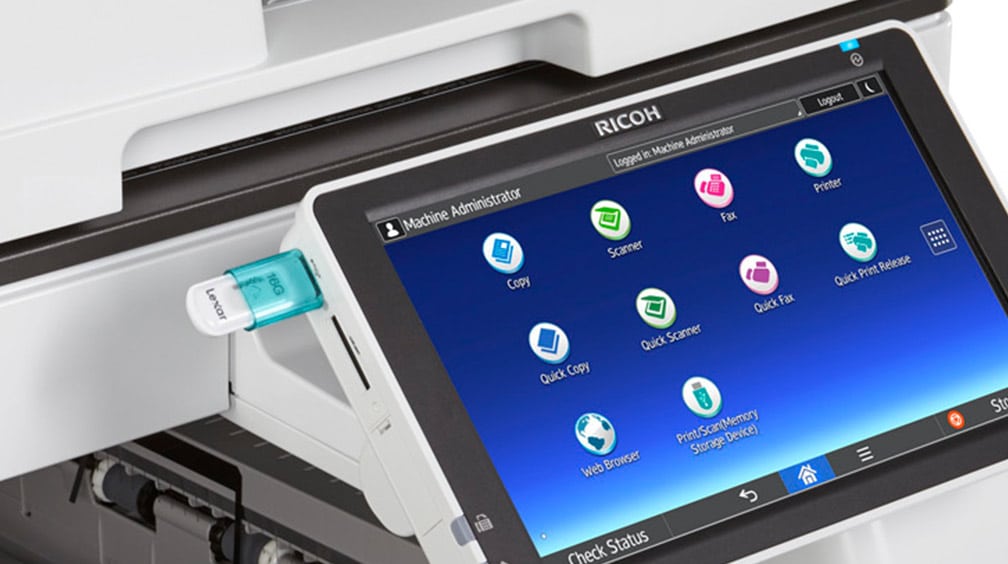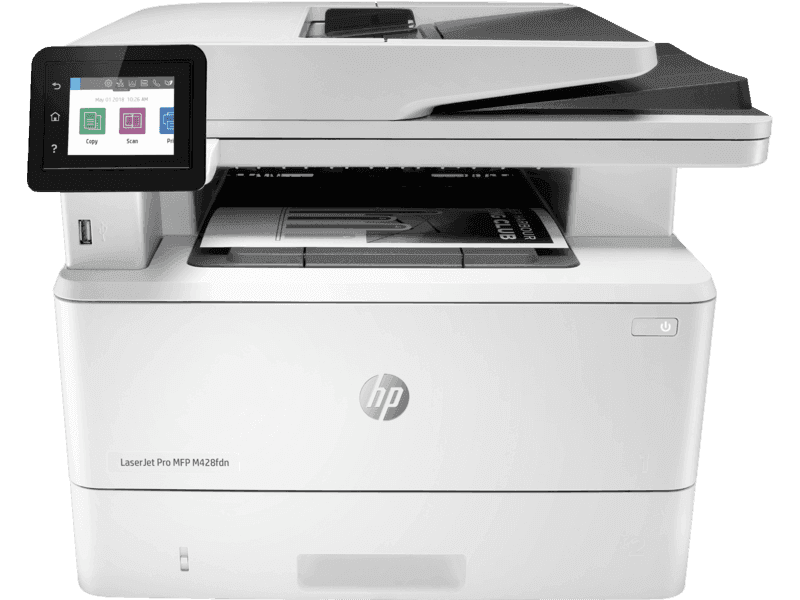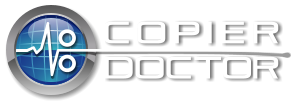
Here are the top 29 most common technical terms related to printers and photocopiers, particularly to copier and printer maintenance and repair, along with what each of them means.
Table of Contents
Essential Printers and Photocopiers Components
Here are some parts that may trigger printer maintenance.
Fuser
The fuser is a critical component in printers and copiers responsible for fusing toner particles onto the paper, creating the visible image. It consists of two heated rollers, typically one coated with Teflon, that work together to melt the toner and adhere it permanently to the paper.
The fuser’s precise temperature control ensures optimal toner transfer without scorching the paper or causing smudging.
Toner
Toner is the fine, pigmented powder that forms the foundation of printed or copied images. It is composed of plastic, resin, and carbon particles, meticulously engineered to produce high-quality, durable prints.
As the printer or copier operates, the toner is charged and attracted to specific areas of the drum cylinder, forming the desired image. Subsequently, the fuser unit melts and adheres the toner particles onto the paper, creating a permanent reproduction of the original image.
Drum
The drum serves as the heart of the image creation process in printers and copiers. It is a rotating cylinder coated with a photoconductive material, typically photoconductive zinc oxide.
When exposed to light, the photoconductive coating becomes electrically charged. This property is crucial for capturing the image from the light source, which is typically a laser beam or an LED array. The charged areas on the drum attract toner particles, forming the visible image.
Image Transfer Roller
The image transfer roller plays a pivotal role in transferring the toner image from the drum to the paper. It is a rubber roller coated with a substance that enhances toner release from the drum.
As the drum rotates, the image transfer roller presses against it, picking up the toner particles and depositing them onto the passing paper.
The precise alignment and pressure of the image transfer roller are essential for achieving sharp, high-quality prints.
Paper Path
The paper path is the meticulously designed route that the paper takes through the printer or copier, ensuring smooth and efficient operation. It encompasses various components, including the feed tray, registration rollers, fuser unit, and exit tray.
The paper path is carefully engineered to prevent paper jams and ensure consistent, reliable performance.
Pickup Roller
The pickup roller initiates the paper feeding process, ensuring a continuous supply of paper to the printer or copier. It is a rubber roller located within the feed tray, designed to grip and transport the paper towards the registration rollers. The pickup roller’s grip and feeding mechanism are crucial for preventing paper jams and ensuring uninterrupted printing.
Feed Tray
The feed tray serves as the primary receptacle for the paper to be printed or copied. It is designed to hold a specified amount of paper, typically in standard sizes such as A4 or letter
The feed tray’s design ensures proper paper alignment and feeding, contributing to smooth and efficient operation.
Registration Rollers
Registration rollers play a critical role in maintaining accurate paper alignment throughout the printing or copying process. They are a series of rollers located along the paper path, designed to guide and align the paper precisely to ensure proper image placement and prevent skewed or misaligned prints.
Exit Tray
The exit tray serves as the final destination for the printed or copied paper. It is located at the end of the paper path, designed to catch and collect the finished documents.
The exit tray’s design ensures that the printed or copied paper is easily accessible and protected from damage.

Key Performance Indicators
Below are some ways to justify regular printer maintenance and to measure how good your provider is.
Resolution
Resolution is a crucial measure of image quality in printed or copied documents. It refers to the number of dots per inch (dpi) that can be reproduced, indicating the level of detail and sharpness in the image.
Higher resolution values generally translate to sharper, more detailed prints.
Duty Cycle
Duty cycle is a critical parameter that defines the maximum number of pages a printer or copier can print or copy within a specified period, typically a month. It is an essential consideration for businesses or individuals with high printing or copying demands.
Yield
Yield refers to the number of pages a toner cartridge can print before requiring replacement. It is an important factor in determining the overall cost-effectiveness of a printer or copier. Higher yield cartridges translate to lower printing costs per page.
Mean Time Between Failure (MTBF)
MTBF is a critical metric used to assess the reliability of equipment, including printers and copiers. It represents the average time between consecutive failures of a device. A higher MTBF indicates a more reliable device, as it implies longer periods of uninterrupted operation before requiring maintenance or repair.
MTBF is typically calculated by dividing the total operating time of a population of devices by the number of failures during that period:
MTBF = Total operating time / Number of failures
Mean Time To Repair (MTTR)
MTTR is another crucial metric used to evaluate the maintainability of equipment, including printers and copiers. It represents the average time required to repair a failed device and restore it to operational status. A lower MTTR indicates a device that can be repaired quickly, minimizing downtime and maximizing productivity.
MTTR is typically calculated by dividing the total repair time for a population of devices by the number of failures:
MTTR = Total repair time / Number of failures
Cost Per Page (CPP)
Cost Per Page (CPP) is a critical metric used to assess the cost-effectiveness of operating a printer or copier. It represents the average total cost of producing a single printed or copied page, encompassing factors such as toner consumption, maintenance expenses, and depreciation of the device.
Calculating CPP involves considering both direct and indirect costs associated with printing or copying:
- Direct costs: These include the cost of toner cartridges, paper, and any other consumables used in the printing process.
- Indirect costs: These include maintenance expenses, depreciation of the printer or copier, and the cost of electricity consumed during operation.
The formula for calculating CPP is:
CPP = (Direct costs + Indirect costs) / Number of pages printed or copied
Printer Maintenance Practices
The terms below may be used to elaborate on your printer maintenance.
Maintenance Kit
A maintenance kit is a collection of commonly replaced parts for printers and copiers. It typically includes components such as fuser rollers, pickup rollers, and image transfer rollers, which wear out over time and require regular replacement to maintain optimal performance.
Jam Clear
A jam clear is the process of removing a paper obstruction that has become stuck within the printer or copier. It involves carefully identifying the location of the jam, gently removing the jammed paper, and ensuring that the paper path is clear of any debris.
Troubleshooting
Troubleshooting involves identifying and resolving technical issues that arise in printers and copiers. It entails diagnosing the problem’s root cause, determining the appropriate solution, and implementing the necessary steps to restore the device to normal operation.

Common Printer and Copier Issues
Printers and copiers are susceptible to various technical issues, ranging from minor paper jams to more complex hardware or software malfunctions. Here are some of the most common problems, which can often be minimised with regular printer maintenance.
Paper jams
Paper jams are among the most frequent issues, often caused by misaligned paper, worn-out rollers, or excessive paper load.
Poor output quality
Poor print quality can manifest in various forms, such as blurry or faded images, streaking, or incomplete toner transfer. These issues may stem from clogged nozzles, low toner levels, or improper print settings.
General Printer-related Terms
Duplexing
The ability of a printer to automatically print on both sides of a sheet of paper, reducing paper usage.
Cleaning Cycle
A self-cleaning process performed by printers to remove dust, debris, and dried ink from the print head.
Calibration
The adjustment of printer settings to ensure accurate color reproduction and alignment of print elements.
Dots Per Inch (DPI)
A measurement used to quantify the resolution or sharpness of printed images and text.
Error Codes
Numeric or alphanumeric codes displayed by the printer to indicate specific issues that need troubleshooting.
Firmware
Software embedded in the printer that controls its functioning, including updates and bug fixes.
Network Printing
The ability to print documents from multiple computers or devices connected on a shared network.
Print Spooler
A software component that manages print jobs, storing them in a queue until printed.
Print Server
Manages print requests from multiple computers or devices on a network, distributing them to the relevant printer.

